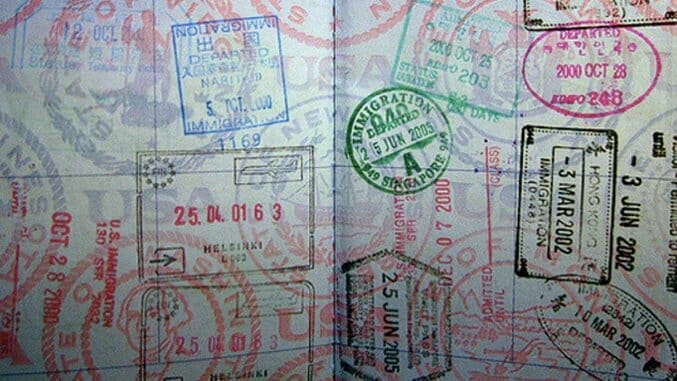Travel Secrets: Navigating Red Tape Around the World

Embarking on a gap year or sabbatical to explore the world is the ultimate dream of the travel-obsessed. It’s a fantasy filled with adventure and discovery. Yet anyone who has pursued the dream knows the reality isn’t all champagne and sunsets.
Once fears of employment gaps, disappearing savings, and separation from family and friends are under control, then the challenge of actual travel begins. Let’s call it “red tape reality.”
The physical act of moving around the world is far from easy. Navigating a global path involves monitoring a sea of ever-changing rules and visa requirements and staying up-to-date on travel conditions.
American passports, which we sometimes take for granted, are our tickets to roam more freely than most. That is, as long as we follow the rules. So what are the rules?
Red Tape Ins & Outs
Gaining Global Access
U.S. passport holders can currently travel to 174 countries and territories with ease, either visa-free or by obtaining a visa on arrival (usually in the airport.) This places the U.S. in fourth position on the Visa Restrictions Index ranking freedom of travel.
For many countries in the Middle East, Africa and Asia, including China, a visa must be applied for and obtained in advance. A spontaneity-killer, visa applications often restrict access to approved areas and require detailed information of travel plans. Once in the country, travelers are subject to that government’s rules, making travel outside approved areas a risky proposition.
Shifting Sands
For most long-term travelers, visiting newly assessable countries is a jewel in the crown. No destination sparkles more brilliantly today than Cuba. With a specific license no longer required and direct flights available. U.S. citizens can plan trips based on one of twelve categories, including educational, professional, and religious activities. Visiting for “touristic purposes,” is still prohibited and detailed records must be kept for five years post travel.
Another new destination, Myanmar, (formerly known as Burma,) is open to visitors after sixty years. Travelers began to trickle in with the unveiling of a limited Visa application in 2011. Today visitors can receive an eVisa mere minutes after application. Entry and departure points are still strictly controlled while sections of the country remain off limits to tourists. Travelers should always carry a printed copy of the approved visa, especially outside the major tourist centers.
Although a rare occurrence, a country can temporarily waive visa requirements for specific high-profile events, as is the case in Brazil this summer. Americans visiting for the Olympics and Paralympics can enter visa-free until September 18.
Know Your Expiration
Many countries prohibit entry if your passport expires less than 90 days from arrival. Simple, right? Not so fast. Some countries assume you will stay through the full allotment of days allowed by the visa and tack on that time. While often subjective, airline and border agents have the right to deny you entry.
-

-

-

-

-

-

-

-

-

-

-

-

-

-

-

-

-

-

-

-

-

-

-

-

-

-

-

-

-

-

-

-

-

-

-

-

-

-

-

-








































